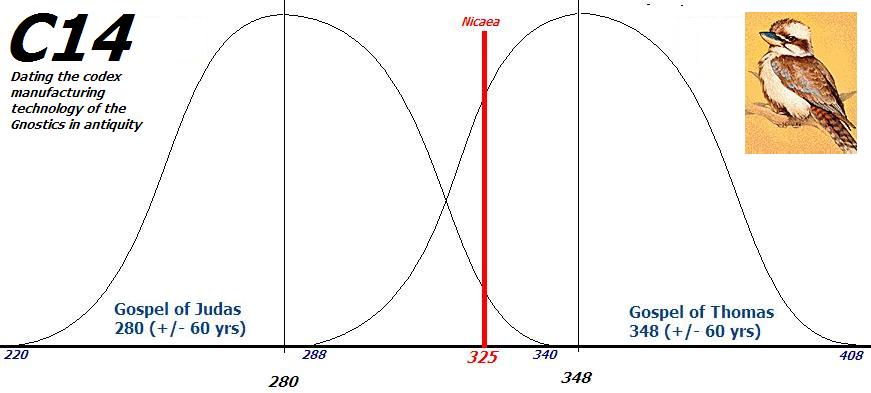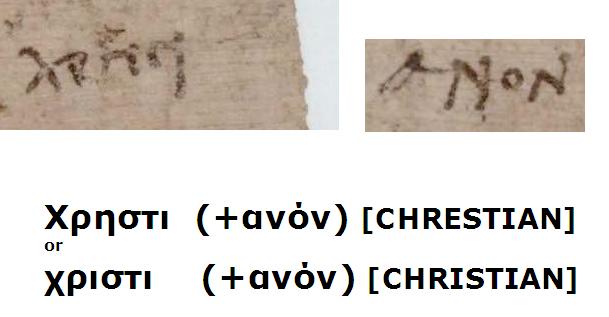
 |
Freethought & Rationalism ArchiveThe archives are read only. |
|
|
#31 | ||
|
Contributor
Join Date: Mar 2006
Location: Falls Creek, Oz.
Posts: 11,192
|
Quote:
Eusebius visits his to-be-martyred master Pamphilus in prison. Eusebius does not seem interested in smuggling a file in to the prison with a cake so that his master could escape. The martyrdom and the underground existence of the nation of christians is part and parcel of the fabrication. They are just more tall stories. The martryrs and he "saints" become "historicized" at the end of the 4th century when the new genre of christian hagiography really took off following the lead of Athanasius's "The Life of Anthony". Momigliano mentions Eusebius as the inventor of "Ecclesiastical History" and Athanasius as the inventor of "Christian Hagiography". Quote:
|
||
|
|
|
|
#32 | ||
|
Contributor
Join Date: Mar 2006
Location: Falls Creek, Oz.
Posts: 11,192
|
Quote:
Quote:
|
||
|
|
|
|
#33 |
|
Veteran Member
Join Date: Jun 2010
Location: seattle, wa
Posts: 9,337
|
This is so utterly demented. We have already had this discussion about Lucian's Peregrinus. I thought I explained to you that Lightfoot and others noticed that Lucian's work seems to have knowledge of the Letters of Ignatius and Polycarp. in other words Peregrinus is a parody of Ignatius or Polycarp or both. At the time I asked why would the same conspiracy have tried on the one hand to successfully dupe the world into believing in a recently created artificial religion and on the other portray this Church Father in such unflattering terms (ie masturbating in public).
Moreover in case you weren't aware of this there are references to Peregrinus in pagan and Christian works. Are you now proposing that all the other references to Peregrinus were forged? What about all of Lucian's works? Peregrinus has been authenticated by experts in Greek literature by comparing the use of language in other of his works. Did the fourth century conspiracy fake Lucian too in order to establish their masturbating Church Father? Why all the effort to create this portrait of a pervert? This is so stupid |
|
|
|
|
#34 | |||||
|
Contributor
Join Date: Mar 2006
Location: Falls Creek, Oz.
Posts: 11,192
|
 Quote:
Perhaps you just dont understand the nature of statistical analysis. Quote:
This is FALSE. The two dates are in respect of the same specific category of codex, namely codices which were manufactured by the preservers of the "Gnostic Gospels, etc". They may as well be the bones of two different Australian bunyips, found at two different billabongs out the back of Bourke. It is valid to look at more than one thing at once. The test material is explicitly related by this categorization. Quote:
The first date has an upper bound of 340 CE. In order that this first date be absolutely no help to me and a liability, this upper bound would have to be less than the date of the Council of Nicaea. For example, had the gJudas been dated at 260 CE (plus of minus 60 years) then the Upper Bound via C14 would be the year 260 + 60 = 320 CE, and the C14 citation would disprove m hypothesis. The C14 citations say that gJudas was manufactured between 220 and 340 CE and not earlier or later *AND* that the distribution of probability for the test sample is peaked at 280 CE, with something related reasonably closely to a standard (symmetric) distribution about this peak. This charge of "manipulating data in a fraudulent manner" is unwarranted. Spin just went out of his depth, that's all. Hope you can swim. |
|||||
|
|
|
|
#35 |
|
Contributor
Join Date: Jun 2000
Location: Los Angeles area
Posts: 40,549
|
You are repeating yourself. Yes, Constantine said nasty things about Arius. But there is no indication that Arius was a pagan priest, or anything other than a heretical Christian who threatened the unity of Christians.
|
|
|
|
|
#36 | |||
|
Contributor
Join Date: Mar 2006
Location: Falls Creek, Oz.
Posts: 11,192
|
Quote:
an order from February 256 to arrest a certain “Petosorapis, son of Horus, Chrestian” (P.Oxy. 3035).  Chrestian can be 'christian' for those who so 'believe'. I do not subscribe to the hypothesis myself. I think the terms are distinct and were conflated at a late date. This "controversy" of P.Oxy.3035 would make an interesting poll question, and my prediction is that it will be close to being a split result. Quote:
Related question about "Chrestian" as a derivative of "Chrestos" How does one say "son of Chrestos" in Greek? |
|||
|
|
|
|
#37 |
|
Contributor
Join Date: Jun 2000
Location: Los Angeles area
Posts: 40,549
|
|
|
|
|
|
#38 |
|
Contributor
Join Date: Jun 2000
Location: Los Angeles area
Posts: 40,549
|
|
|
|
|
|
#39 | |
|
Contributor
Join Date: Mar 2002
Location: nowhere
Posts: 15,747
|
Quote:
While a few texts have been incorporated into the Lucianic tradition, which were forgeries? "[H]and over fist" suggests lots and in continuation. How many are lots here? And how does one know when they were produced? It seems to me that none of the phrase is justified. As to Peregrinus, it mentions "christians" in four paragraphs and there is no witnessing to christianity in these mentions, no reference to christ, no martyrdoms, no revelations, nothing to reflect a christian viewpoint behind them. They seem to represent a befuddled bunch who could be conned by Peregrinus. So we return to Toto's question: "And your evidence for Peregrinus being a forgery is ???" spin |
|
|
|
|
|
#40 | |||
|
Contributor
Join Date: Mar 2006
Location: Falls Creek, Oz.
Posts: 11,192
|
Quote:
Quote:
Quote:
|
|||
|
|
| Thread Tools | Search this Thread |
|